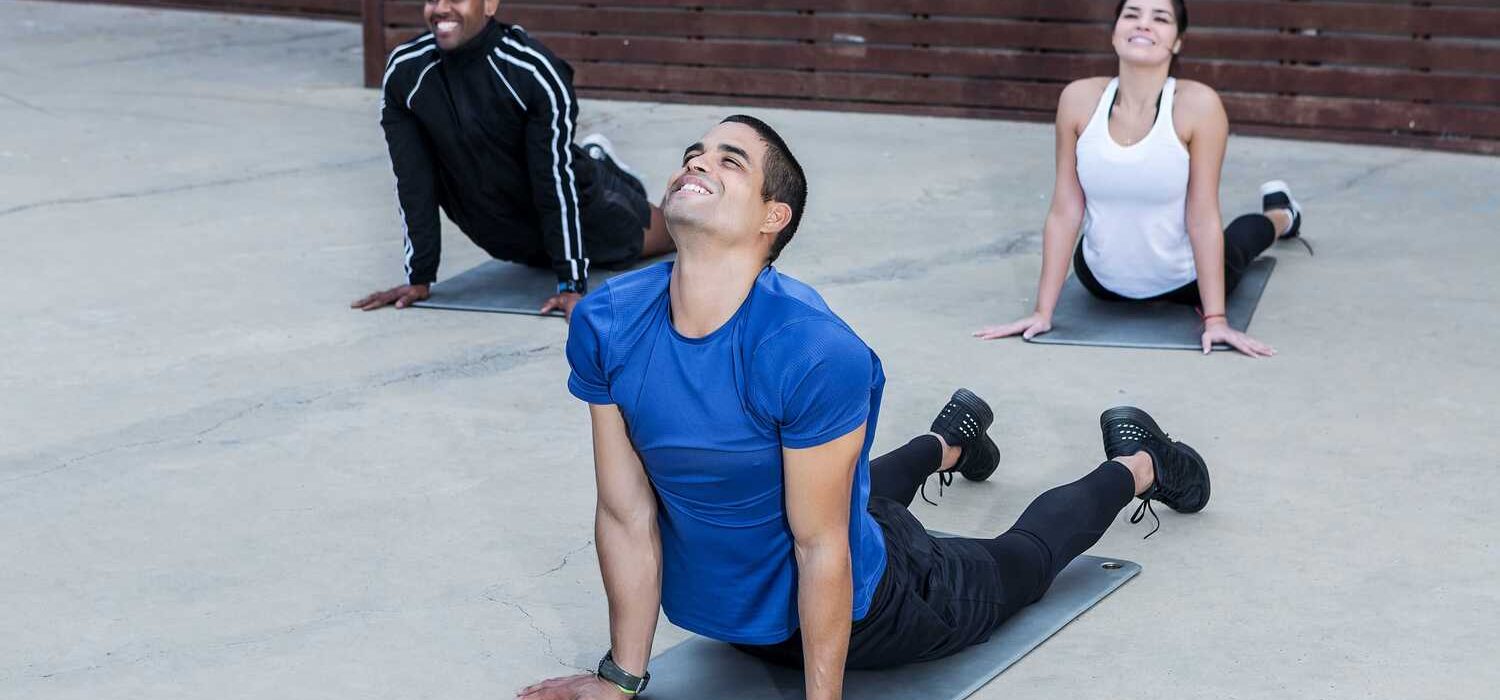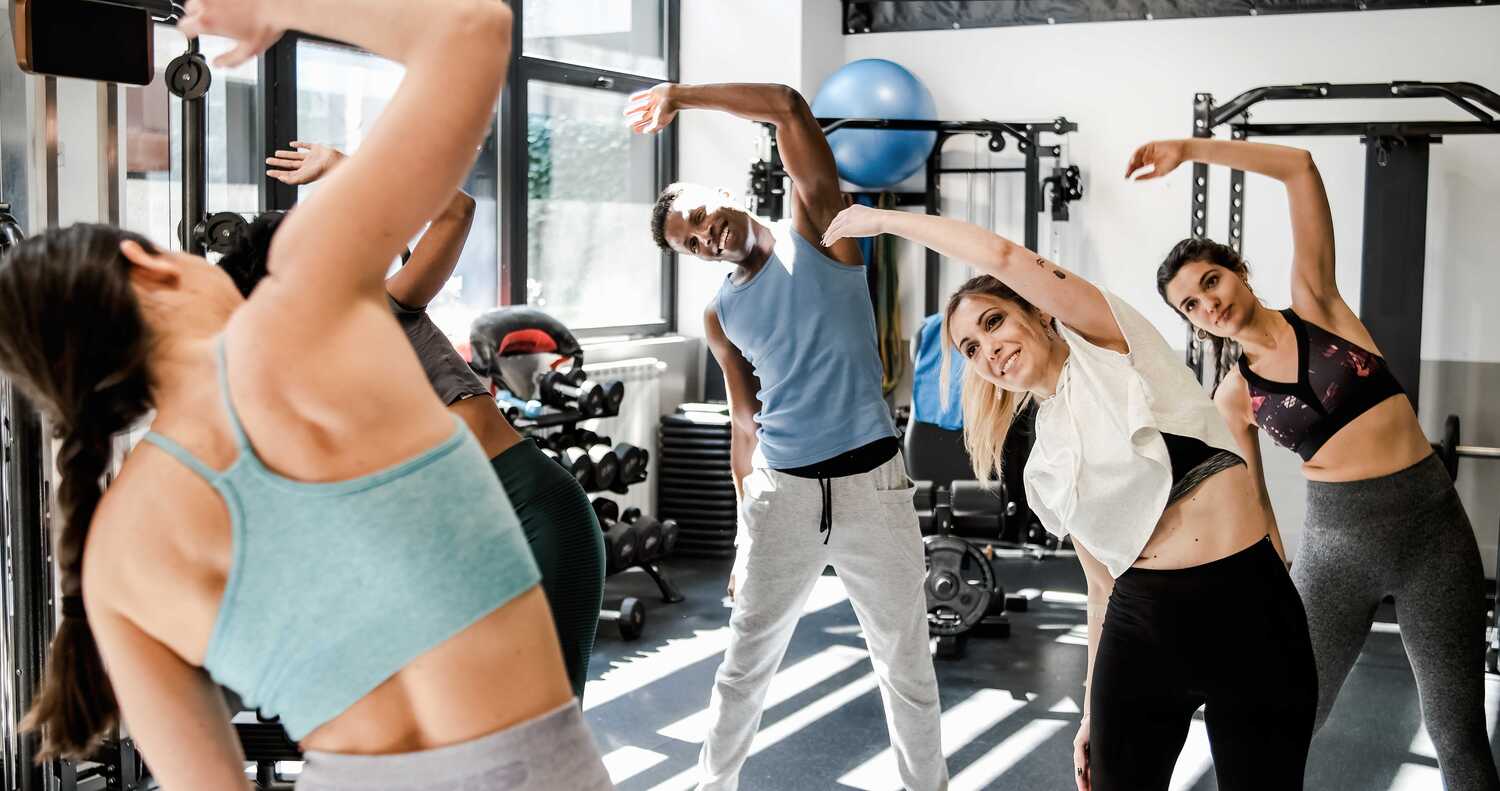- Jake Peter
- Published: May 27, 2024
- Fact-checked by Dr. Desiree Granados

Maintaining good posture is crucial for overall health and well-being. Poor posture can lead to a range of health issues, including chronic back pain, tension headaches, and decreased flexibility.
One of the most effective ways to improve and maintain proper posture is through regular stretching. In this article, we’ll explore some of the best stretches designed to enhance your posture and support a healthier, more aligned body.
What Causes Bad Posture?
Bad posture can stem from a variety of factors, many of which are intertwined with our daily activities. Some common causes include:
- Lack of Awareness: Many individuals are not conscious of their posture throughout the day, leading to the development of bad habits.
- Sedentary Lifestyle: Prolonged sitting, especially with poor ergonomic setups, can contribute to postural problems.
- Muscle Imbalance: Weak or tight muscles, particularly in the core and back, can pull the body into misalignment.
- Improper Footwear: Wearing high heels or shoes with inadequate support can affect the body’s natural alignment and lead to bad posture.
- Technology Use: Constant use of smartphones, tablets, and computers encourages slouching and forward head posture.
- Stress: High stress levels can cause muscle tension, particularly in the neck and shoulders, resulting in a hunched posture.
- Injury and Health Conditions: Previous injuries or chronic conditions can impact the way we hold ourselves, often leading to compensatory postures that are not healthy.
Can You Fix Posture with Stretching?
Stretching can indeed improve and correct posture. Poor posture often results from muscular imbalances, which occur when certain muscles become tight and shortened while others become weak and lengthened. Stretching helps to alleviate this imbalance by lengthening tight muscles, thereby allowing the body to realign into a more natural and healthier posture.
Incorporating stretching into your daily routine can not only ease tension and prevent discomfort, but also promote better posture. However, it’s essential to combine stretching with strengthening exercises to optimize your results.
10 Exercises to Improve Your Posture
Here are 10 exercises you can perform to improve your posture:
- Plank: Strengthens your core, shoulders, and back, which are all key for good posture.
- Scapular Squeezes: Help activate and strengthen the muscles between your shoulder blades.
- Cat-Cow Stretch: Improves flexibility in the spine and relieves tension in the back.
- Bridges: Strengthen the lower back, glutes, and hamstrings, promoting a strong posterior chain.
- Wall Angels: Improve mobility in the shoulders and upper back.
- Seated Rows: Target the upper back, helping to counteract the forward hunch from sitting.
- Chest Opener Stretch: Stretches the chest muscles that often become tight from poor posture.
- Chin Tucks: Strengthen the neck muscles to support the head and maintain alignment.
- Reverse Flys: Focus on the upper back and rear shoulders, correcting slumped shoulders.
- Thoracic Extension: Enhances the movement and flexibility of the upper back.

What Is the Best Exercise to Correct Posture?
When it comes to correcting posture, the bridge exercise stands out as one of the most effective movements you can perform. This exercise primarily targets the muscles in your lower back, glutes, and hamstrings, which are crucial to maintaining proper posture.
To perform the bridge exercise, lie on your back with your knees bent and your feet flat on the floor, hip-width apart. Slowly lift your hips towards the ceiling while squeezing your glutes and engaging your core. Hold this position for a few seconds before gently lowering your hips back to the starting position.
What Exercises Fix Slouching?
Slouching can lead to various health issues, including back pain and reduced mobility. Fortunately, several exercises can help correct slouching and improve overall posture, including:
- Shoulder Blade Squeezes: Sit or stand with your back straight. Squeeze your shoulder blades together and hold for 5 seconds, then relax. Repeat 10 times.
- Chin Tucks: Sit or stand with a straight back. Gently tuck your chin towards your chest and hold for 5 seconds, then release. Repeat 10 times.
- Chest Stretches: Stand in a doorway with your arms at 90 degrees on each side of the door frame. Step forward slightly to feel a stretch in your pectoral muscles, and hold for 15-30 seconds. Repeat 2-3 times.
- Wall Angels: Stand with your back against a wall, arms at a 90-degree angle, and elbows in line with your shoulders. Slowly raise your arms overhead while keeping them against the wall. Lower them back to the starting position and repeat 10 times.
- Plank: Get into a push-up position, but rest on your forearms. Keep your body in a straight line from head to heels and hold for 15-60 seconds. Repeat 3 times.
- Cat-Cow Stretch: Start on your hands and knees. Arch your back (cat) and then dip it towards the floor while lifting your head and tailbone (cow). Alternate between these positions for 10-15 reps.
Can You Correct Years of Bad Posture?
It is indeed possible to correct years of bad posture. The key lies in understanding that posture correction is not an overnight process, but one that requires consistent effort over the long-term.
Exercises that strengthen the core and back muscles and stretching routines that improve flexibility can make a significant difference over time. Additionally, becoming more mindful of your everyday habits—such as how you sit, stand, and sleep—can aid your posture correction efforts.
In some cases, seeking help from a physical therapist and/or chiropractor may be necessary.
Tips to Stretch Safely and Effectively
To ensure you stretch safely and effectively, consider the following tips:
- Warm Up First: Always begin with a light warm-up, such as walking or jogging, to increase blood flow to your muscles.
- Don’t Bounce: Avoid bouncing or jerking motions while stretching, as this can cause muscle strains. Hold each stretch steadily.
- Breathe Deeply: Practice deep breathing to relax yourself and improve oxygen flow to your muscles.
- Hold for 15-30 Seconds: Maintain each stretch for at least 15-30 seconds to allow adequate time for the muscle(s) to lengthen.
- Focus on Major Muscle Groups: Ensure you target all major muscle groups, including the legs, hips, back, chest, shoulders, and neck.
- Don’t Stretch Through Pain: Stretch to the point of mild discomfort, but never to the point of pain. Pain can indicate an injury.
- Stay Consistent: Incorporate stretching into your regular fitness routine to sustain your flexibility over time.
- Use Proper Technique: Learn the correct stretching techniques for each muscle group to maximize your results and prevent injury.
Conclusion
Improving posture is not just about aesthetics; it’s about improving your overall health and well-being. By incorporating a mix of stretching and strengthening exercises into your daily routine, you can counteract the adverse effects of bad posture. Remember, posture correction is a gradual process that requires patience and consistency. Stay mindful of how you hold your body throughout the day and make the necessary adjustments to your movements and habits.
If you want to improve your health and well-being, the Sanctuary Wellness Institute can help. Our online personal trainers create personalized fitness plans and provide one-on-one guidance and support through regular virtual sessions. In addition, participants in our medical weight loss program get weight loss injections shipped directly to their homes for self-administration. Book a free consultation today to learn more.
How we reviewed this article:
- Anne Asher (2022). What Causes Bad Posture
https://www.verywellhealth.com/posture-fixes-what-are-you-up-against-297037 - Heidi Godman (2022). Is it too late to save your posture?
https://www.health.harvard.edu/exercise-and-fitness/is-it-too-late-to-save-your-posture - Emily Cronkleton (2023). 12 Exercises to Improve Your Posture
https://www.healthline.com/health/posture-exercises - James Roland (2019). Want to Kick Your Slouching Habit? Try These 8 Strategies
https://www.healthline.com/health/slouching - Physio Tattva (2021). Is It Too Late To Save Your Posture
https://www.physiotattva.com/blog/is-it-too-late-to-improve-your-posture-physiotattva - Mayo Clinic Staff (2023). Stretching: Focus on flexibility
https://www.mayoclinic.org/healthy-lifestyle/fitness/in-depth/stretching/art-20047931
Current Version
May 27, 2024
Written By
Jake Peter
Fact-checked By
Dr. Desiree Granados
Editorial Process
Our Editorial Process
Other Posts About Personal Trainer
No posts found!

Jake Peter received his journalism degree from Emerson College and has been writing content for the Sanctuary Wellness Institute since 2021. He is passionate about all things cannabis.

